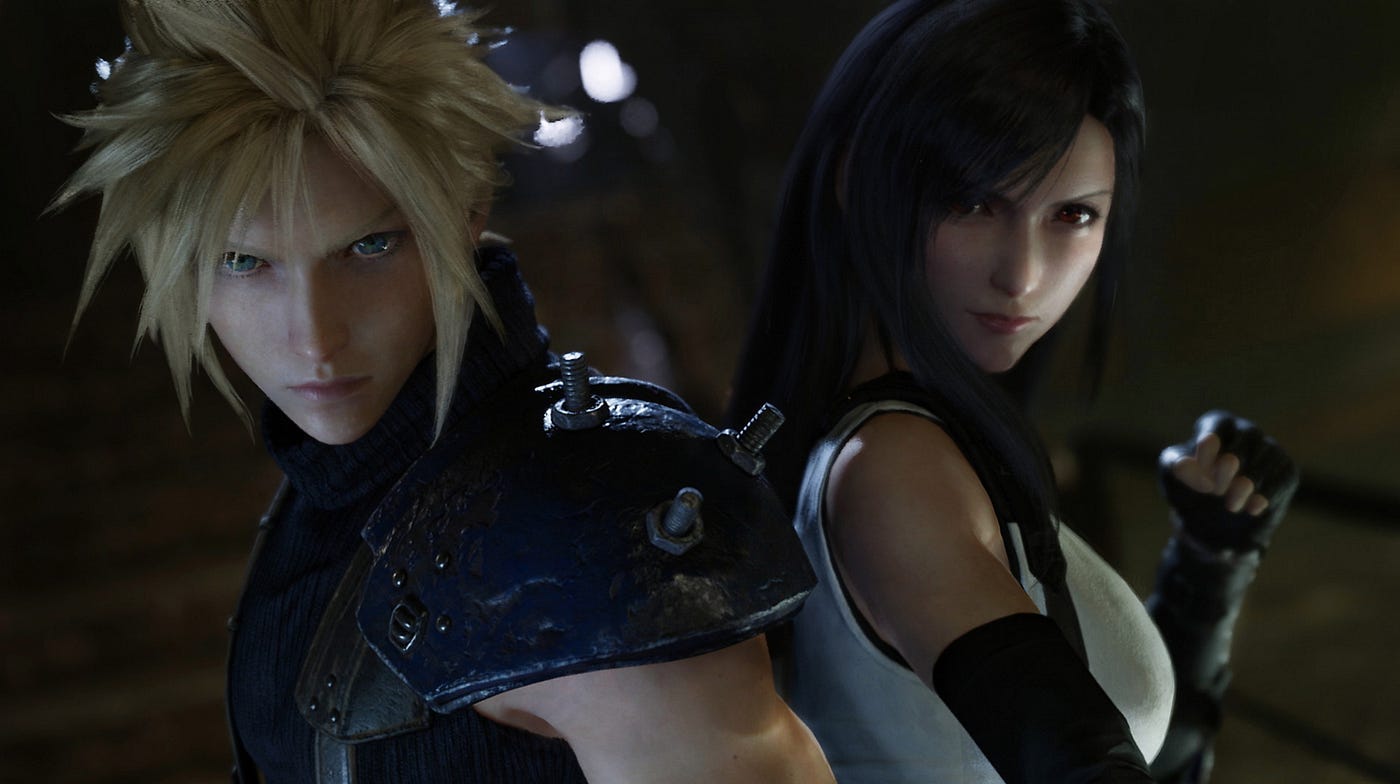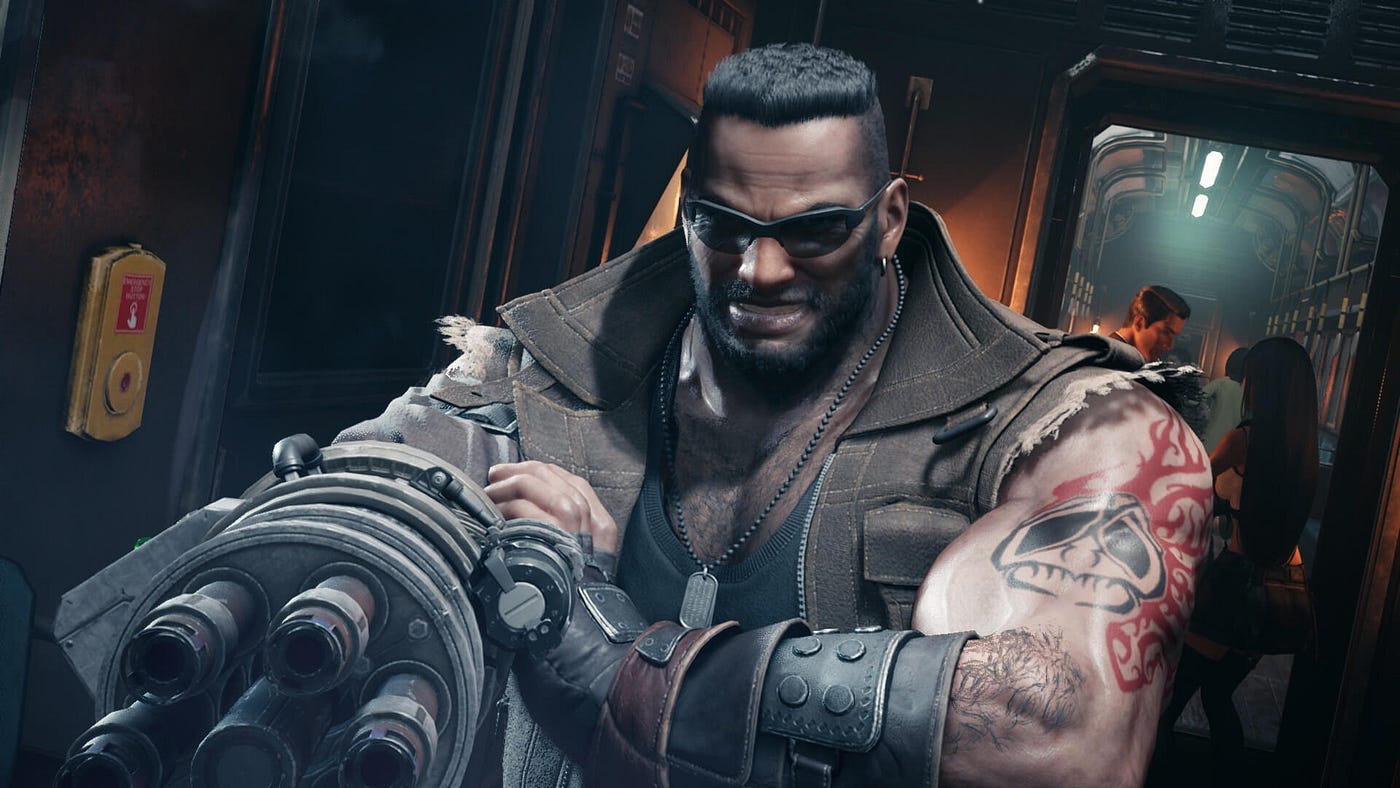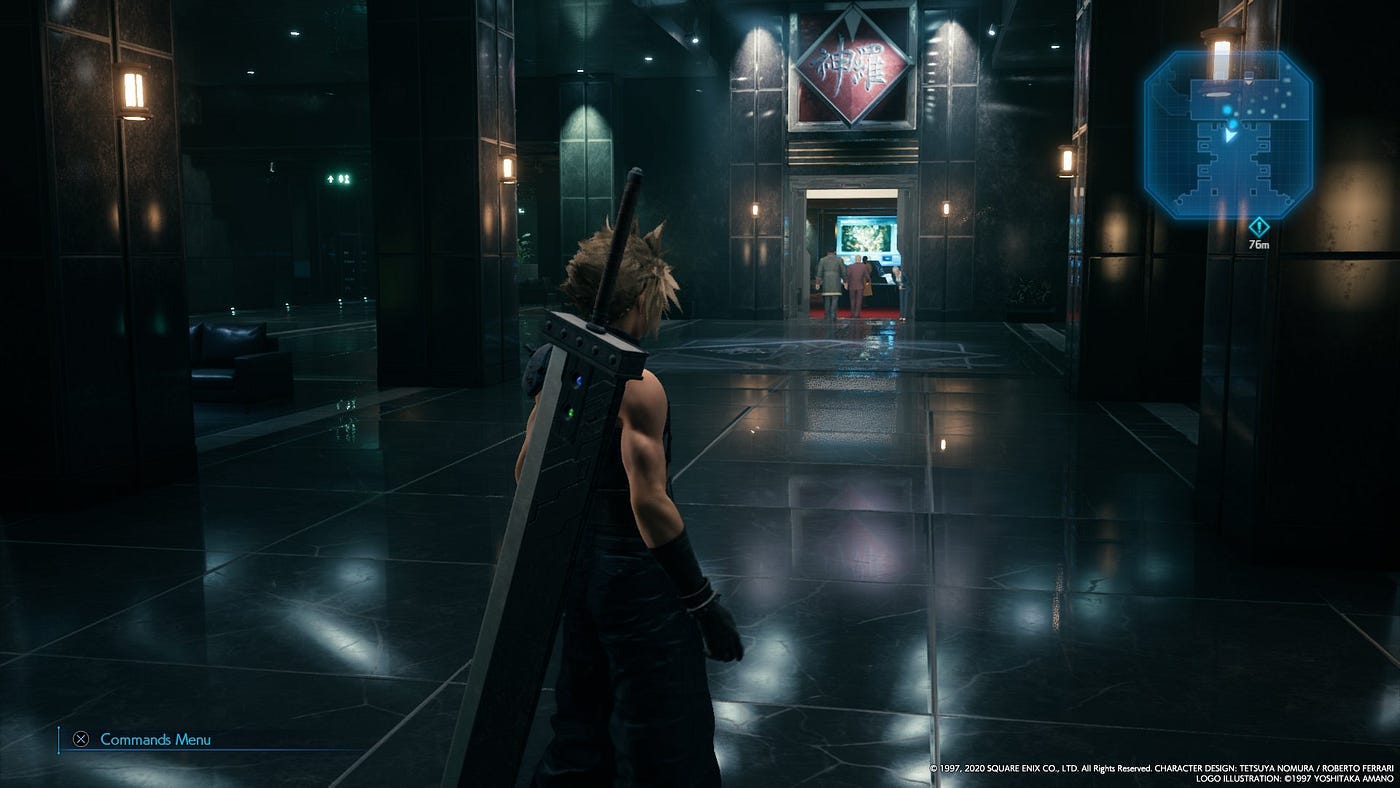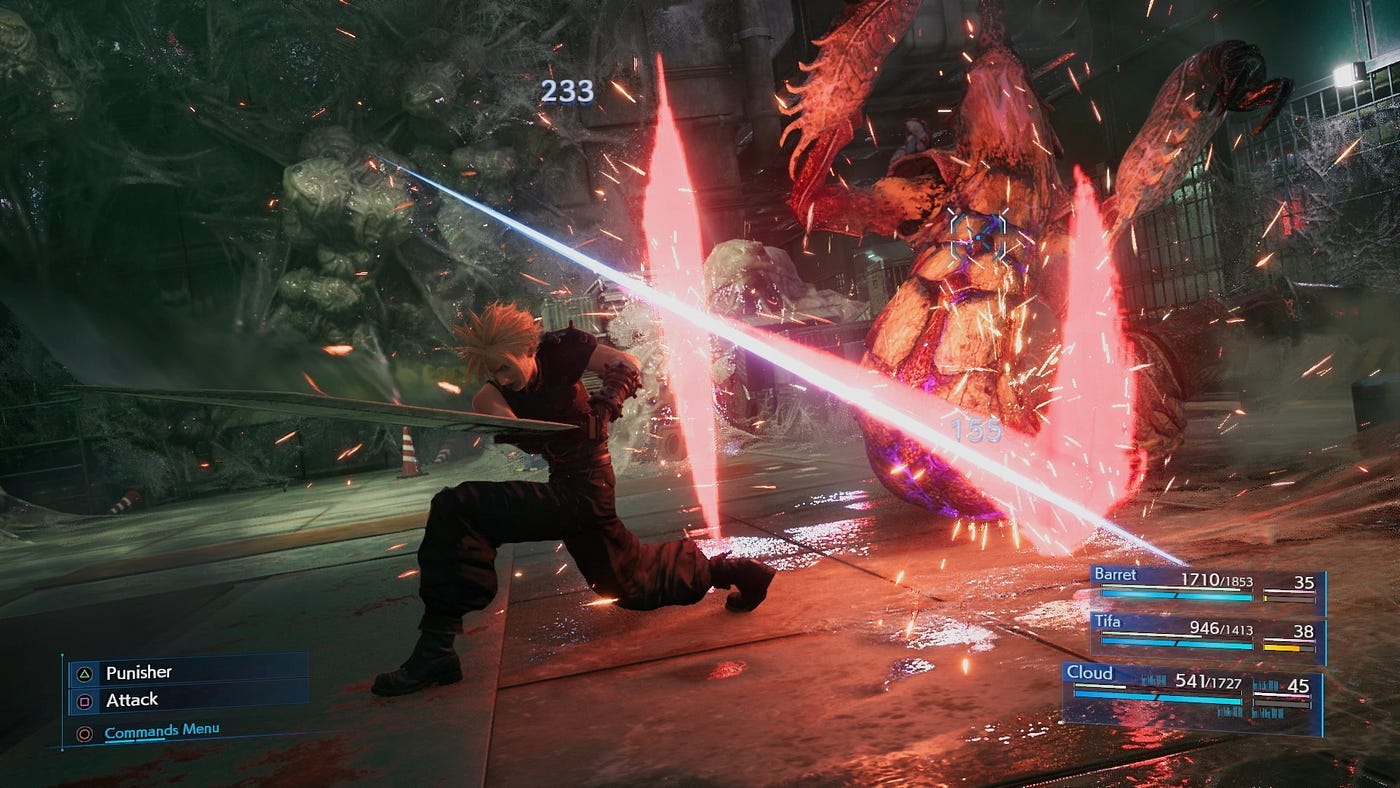Here’s how Final Fantasy VII Remake does justice to a generation-defining classic
2020's remake of one of the greatest RPGs of all time is a video game remake done right.
Author’s note: This article was initially published on Medium.
Some spoilers for the Final Fantasy VII story may be included. Read at your own risk.
It’s no secret that Final Fantasy VII is my favourite video game of all time. And truth be told, I was always wondering how a remake of the game could be a gateway for a new generation of video gamers could play out today, even with nothing being able to top what it felt like to experience much of it for the first time all over again. Many of us had known that an HD remake of Final Fantasy VII were to come ever since the PlayStation 4 was announced, and it wasn’t until last year where we finally got to experience it. Considering the timelessness of the story which the original Final Fantasy VII had left behind upon the world of video games, it’s easy enough for me to acknowledge that to a certain extent the original might not exactly have aged the best in certain regards, but years of having played Final Fantasy have never been able to take that joy away from me. And soon enough, what I got from this remake was just about everything that I felt like I could ever have wanted from such.
For starters, it’s not necessary for anyone to have played the original Final Fantasy VII before entering Final Fantasy VII Remake, but to go back to a point that I had made at the start of this essay, it’s also very dated in a sense that I understand wouldn’t appeal to many players now. From the way it implemented the Active Time Battle that was introduced into the series starting with Final Fantasy IV on the Super Nintendo Entertainment System, or the polygonal, blocky visual design, or maybe the extreme amount of backtracking that’ll be required to allow you to move forward, it’s hard enough to play the game without getting lost and sometimes needing a walkthrough to help out. But I’d also found that getting lost within the very world that any Final Fantasy game had created was always a part of the joy that came by from having played any of these games.
Nonetheless, I feel like I could go on to talk about why I think Final Fantasy VII Remake works amazingly with having only covered not even half of Disc 1 of the original game. For starters, just wanting to wander around Midgar in the original game is something that feels so easy, but if anything it was also a very slight segment — one where you could even miss out on some really helpful tips for the rest of the game if you weren’t careful. But our time with Midgar was only so slight, even slighter the amount of time we’d spent with Sector 7 before Shinra blew it up with the sole intention of asserting their dominance over the planet by taking AVALANCHE out of the question. Which is one thing that brings me to talk about what I think Final Fantasy VII Remake does more than well enough in order to bring justice to the original PlayStation classic.
It fits to talk about the game’s updated visual style as it takes full advantage of the capabilities presented from the PlayStation 4; opting for a more realistic style for each of its characters. Not only do the iconic characters from the classic video game shine brightly in this remake, but the attention to detail in this game overall is just absolutely remarkable. They don’t feel just like fully realized recreations of characters whom we’d ingrained in our heads for so long but now like real people whom we’re seeing ourselves face to face with. Their personalities haven’t changed in the slightest, but there’s a certain depth left untapped from the fact they only spoke via text bubbles in the original game now being realized in this version, making this remake feel like the sort of game that it’d always meant to be from the start. And it helps that the new cast of voice actors are all wonderful too.
That’s only the start, but with how much the remake develops upon the relationships that each character formed with one another when they met each other, there’s a more personal depth that appears to be more fully realized. The extra additions to the relationships between Cloud and Tifa, and Tifa and Aerith are always welcome — but with Cloud Strife having a reputation for being so glum not much has changed there aside from the insight we now have into what made him so distinctively stoic. You’ll get a sense that people around him wants to try and cheer him up (this is especially the case with Aerith and Jessie) but I’d always felt that it was hard enough trying to pull off so much of that context within the opening of the original game especially considering what it reveals about his past later on in the story. He’s still as sullen as we’d always recognized him to be but he’s not completely in that state without reason, now created to be a tragic hero attempting to reconcile with his own fate.
With this game only covering just the first portion of the full story, which was entirely set within Midgar, there was always a concern with regards to how this game could approach that sense of linearity. Many of the past Final Fantasy games had never presented themselves as such barring Final Fantasy XIII, oftentimes its world felt open enough for oneself to try and find more side quests which they could take on at one point of the game — while Final Fantasy VII Remake presented another scenario where they must all be done within a certain chapter. Some of these side quests weren’t always the most fun (finding cats or certain records for certain side quests often had me wandering for hours on end on my first playthrough) but in how they established Midgar as a setting I had also felt they did the job perfectly in capturing the sort of economy in which Shinra had made for the people who live under their influence across every sector of Midgar.
In many ways, the expansions to the original story as they allowed us to see more of Midgar were welcomed by myself because of the fact that we never really got to know many of the people who lived in the slums of Midgar. Many side characters from the original game like Biggs, Wedge, and Jessie who never had much urgency within the original game are now given a more dominant supporting role. Of course, many sectors that had made up Midgar were what stayed within our minds most especially for the fact that Midgar in itself represented the most frightening sort of dystopia: a purely capitalist fantasy where people’s interests and lifestyles all live under the control of the Shinra. It was this aspect of the original Final Fantasy VII’s main plot that made it resonate with many over the more than two decades of its popularity; because Midgar represented what many thought of was a dream home only to be relegated to the slums that would eventually be destroyed for the purpose of taking out those who oppose the Shinra’s outright authoritarian approach to ruling over the way in which Midgar’s citizens live. And here’s where we start getting a better sense of how sinister their agenda truly was.
Here, you see Shinra having museums dedicated to themselves, especially when you’re exploring the building to rescue Aerith Gainsborough from their captivity. The more you explore the Shinra building, the more their terrifying influence starts to jump at you. It jumps at you because you know that the people of Midgar need electricity in order to keep their daily lives going, and the idea of Shinra being a power-hungry corporation that will assert its dominance from every day moving forward becomes clearer by the day. To this day, it’s something that still resonates as many megacorporations continue to fuel the way we move through life akin to serving basic necessities like Amazon, these brands only ever find ways to continually dominate our own lives as we know them to a point in which the public has been rendered uncritical of their influence. With Shinra’s lingering presence in the way people live their lives in Midgar, what this remake does so well is create a picture of how terrifying it is to be living at the hands of a corporation that has the literal power to kill anyone who opposes them (as shown with the destruction of Sector 7).
While the original game never really gave us much time to explore the Shinra building following Sephiroth’s first appearance, the remake gives us more time to engage with their agenda as we realize how frightening they are as the dominant antagonistic force of the game. Sure, Sephiroth has already been cemented in the memory of many as one of the most iconic video game villains of all time (and for very good reason, too) but to be in the face of the people who were responsible for his creation for what was only covering the opening of the original game’s entire story it allows us to see Shinra as the oppressive and authoritative force that they are, now that we’ve been given more time to interact with the people of Midgar. As we wander through the slums of Midgar’s sectors, this supposed remake doesn’t treat these moments as filler but rather a chance for us to engage further with a setting that we’d known from the game’s original release date and had stayed with us ever since.
As the years have gone by and the Final Fantasy series has grown to evolve, so does the gameplay style. Instead of the traditional active time battle system we have a more fluid combat style of combat that rings true to the original games’ on-the-fly decision making with its fights now feeling like they’re moving by at a much faster pace because everything is constantly in motion. Yet its faithfulness to the original game’s combat mechanics which have resembled turn-based combat, as popularized by the series’ first games, have also come around to reaffirm why the original game’s combat style has aged as gracefully as it did. With everything moving by in real time rather than with the same active time battle system that could easily be shifted into turn-based combat from the original, it still sticks true to the feeling that the original had intended to create with the buildup of the ATB gauge, allowing the room for more possibilities. Also new to the game is the stagger mechanic, a feature from Final Fantasy XIII — and worked in as beautifully as possible.
With the amount of content that the original Final Fantasy VII was able to cover when it came out in 1997, Final Fantasy VII Remake doesn’t let down in allowing itself to stand alone as a new creation entirely. Many changes to how we remember the course of the original story had been introduced, but there’s still a part of me that wonders how many of the most famous moments from the original game will be handled for new gamers to experience. One of those welcome changes was Cloud’s cross-dressing scene, which is maybe one of the few moments of the original where it shows its age — now reworked into a scene where Cloud takes part in a dance at the Honeybee Inn, which has also been fittingly reworked from a sleazy club from the original game into a lavish nightclub. This new take on Cloud’s crossdressing scene, with Cloud now having a spot in the limelight compared to the original scene where he just simply puts on a dress to rescue Tifa from the hands of Don Corneo feels like a new direction for the series as it now embraces a sense of self-expression in a rhythm game led by Andrea Rhodea.
Nonetheless, with how much new content this remake has provided in store for the game it’d only be worth asking what’s next as this portion is one of an ongoing remake project for the original game. This isn’t the same Final Fantasy VII as we had remembered growing up, many familiar story beats were always on the verge of changing as time had gone by and that’s where this remake allows room for more possibilities with the game’s future. All of this is evident within the way that Final Fantasy VII Remake ends, but I’m only wondering what’s to come or by what extent will the story be altered. With Tetsuya Nomura in the directorial role, there’s a crucial moment that many would know, as it’s shaken up many gamers over the years and has stuck with us so many years later (I don’t need to say what it is, because if you’re reading about this game, you already know what it is) and a lot of theories have been laid out with regards to what the next episodes are going to look like.
I think that if there’s anything else to look out for, considering the nature of the world map from the original game at this point onward it’s only exciting to me to see how this new remake would expand upon a lore that we’d familiarized ourselves with growing up. This remake is an ambitious endeavour that does so much more than bring the same story to a new generation of gamers but it’s also the perfect way for many people who’ve stuck with the original game for so long to look at the classic in a different light. No matter how long it will take for Square Enix to publish the next episode, I’m excited. And given as the original Final Fantasy VII has been a huge part of my life growing up, I can’t help but admit that there were many moments in this new experience that had me getting misty-eyed (especially in Cloud and Aerith’s interactions) but ultimately, it felt like I was just playing the original game all over again for my first time.












